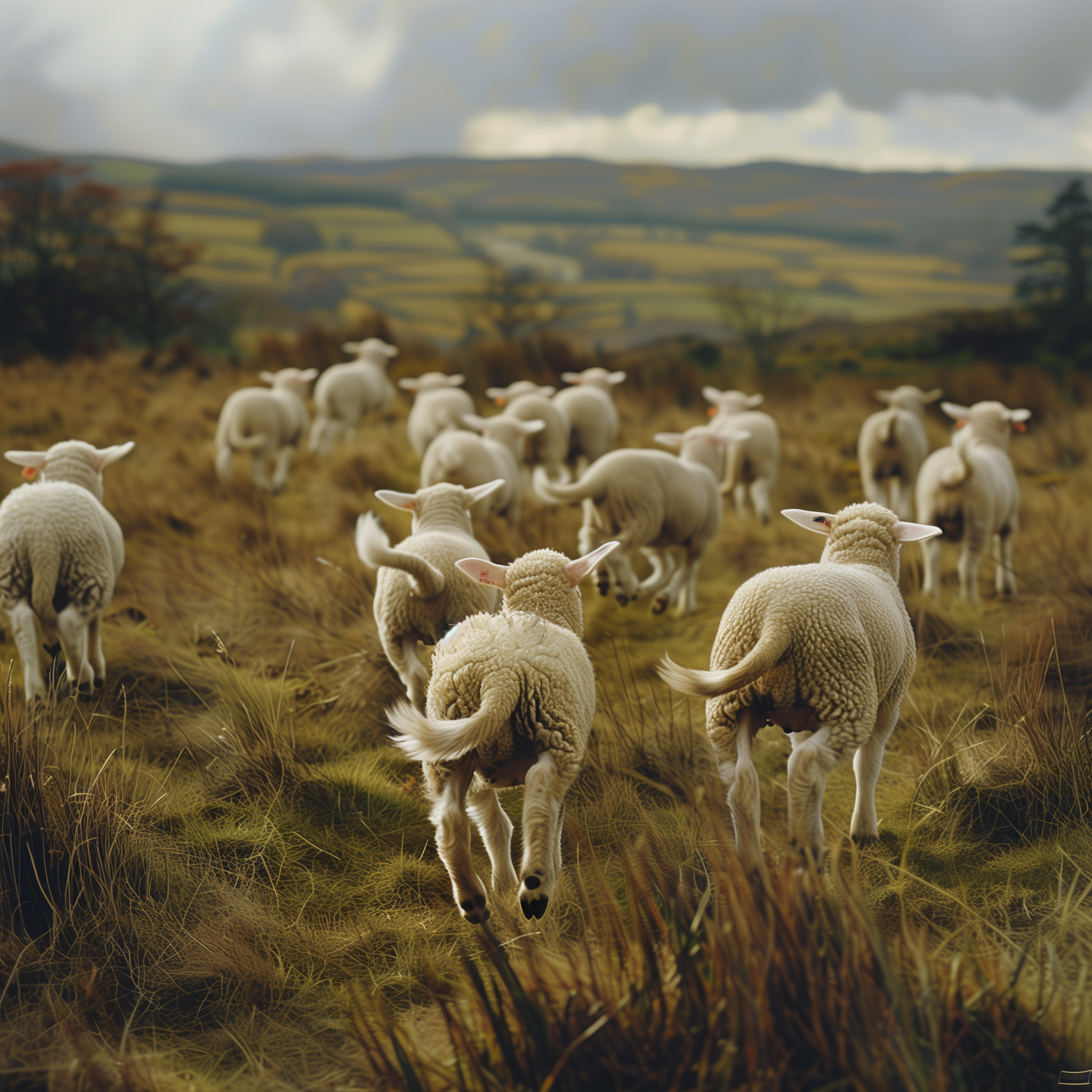Lamb's Tail Pie - An Easter Tradition That No Longer Exists
How many people will know about lamb's tail pie, a popular old Eastertime recipe commonly found across rural England ?
Very few, I’d imagine. But it used to be a very common delicacy eaten in the West Country at this time of year, more than half a century ago. Now, I bet not a single portion of this curious dish will be served this holiday weekend.
That will partly be due to the fact that lambs no longer have their tails chopped off with a knife – instead, they whither and drop off painlessly at an early age thanks to those little rubber tourniquet bands that are applied shortly after birth. But it is also probable that no one would be eating lamb's tail pie anyway, because it is apparently a real fiddle to prepare.
Half a century ago, my journalist father, Peter Hesp, was investigating the region’s love of lambs-tail pie at a time when the dish was already becoming just a memory in the kitchens of the hills.
“It was Mr Louis Gimblett who first told me about this delicacy when I called to see him at Blake’s Farm, Bicknoller, nestled under the Quantock Hills,” wrote my father in a newspaper at the time. “Both he and his brother Harold, the celebrated county cricketer, had eaten their share of lambs-tail in their younger days. ‘And it was absolutely delicious,’ said Mr Gimblett. ‘It tasted like veal and was best eaten cold.’
“From his mother, seated in the old farm kitchen, I learned something of the art of cooking the treat. In the old days, she told me, the tails would not be cut off until the lamb was about six weeks or a couple of months old, and the bigger the tail the better. First they were dropped into a tub of scalding hot water for the right length of time. Leave them too long and the skin peeled off; take them out too soon and the wool stuck on.
“Old Mrs Gimblett did not approve of the method sometimes used,” wrote Hesp senior, “of leaving the tails in a dark cupboard or burying them in the ground until such time as the wool could be pulled away easily.
“The next job was to scrape the tails. For this, the womenfolk would all sit around a tub full of cold water in which plenty of salt had been dissolved and scrape away while they gossiped. Finally, the tails were cut into short pieces and baked in a pie together with beaten-up egg and milk. Mrs Gimblett told me it was a long, tedious job – and little wonder that modern housewives would have nothing to do with it.”
Around a decade ago I asked about lambs’ tail pie in the WMN and was flooded with responses from older readers. “As a child I regularly ate lambs’ tail pie at Easter,” wrote David Sercombe, of Sampford Courteney. “We also regularly ate ‘bath-chaps’ – pig cheeks rolled in breadcrumbs and eaten with salad.”
“Instead of a pie,” recalled Virginia Mills from Bridgwater, “they (the tails) were dipped in egg and breadcrumbs and shallow-fried and served with bacon and tomatoes.”
She was a nanny on a farm in the 1960’s and admits she never tried a tail because watching the farmer… “pick up the six inch tails in his fingers and slip them in and out of his mouth, spitting out the bone, was not a pretty sight.”
Lots of people, like Sarah Preston of Kingsbridge, wrote to tell me that encyclopaedic Mrs Beeton mentioned the subject of lambs’ tails. She like to serve them “Russian-style”. Ruth Neil, of Constantine, wrote to explain that Russian-style meant: “Cooked until tender, then dipped in batter and fried.”
Catherine Boyd Brent, of Chulmleigh, penned an account of the W.I.’s interest in the wagging appendages: “Lay the tails in a pie dish with pepper and salt,” decreed the W.I. “Make parsley sauce and pour over. Cover with short pie crust and bake in moderate oven.”
“I cannot give you a recipe,” wrote Colin Reed, of Braunton. “You rightly say, it was better eaten cold than hot. As a boy I used to help my mother pull off the wool after the tails had been scolded. Not an easy job! The pie consisted of lambs’ tails, potato, onion, a little milk I think, topped with pastry. The problem eating it - but it was worthwhile, the pie was so good - was extracting the tiny bones and the occasional strand of wool from your mouth.”
Apparently the next country delicacy that would traditionally have been looked forward to in the region’s calendar would have been rook pie, but I doubt many folk will be making that either.






